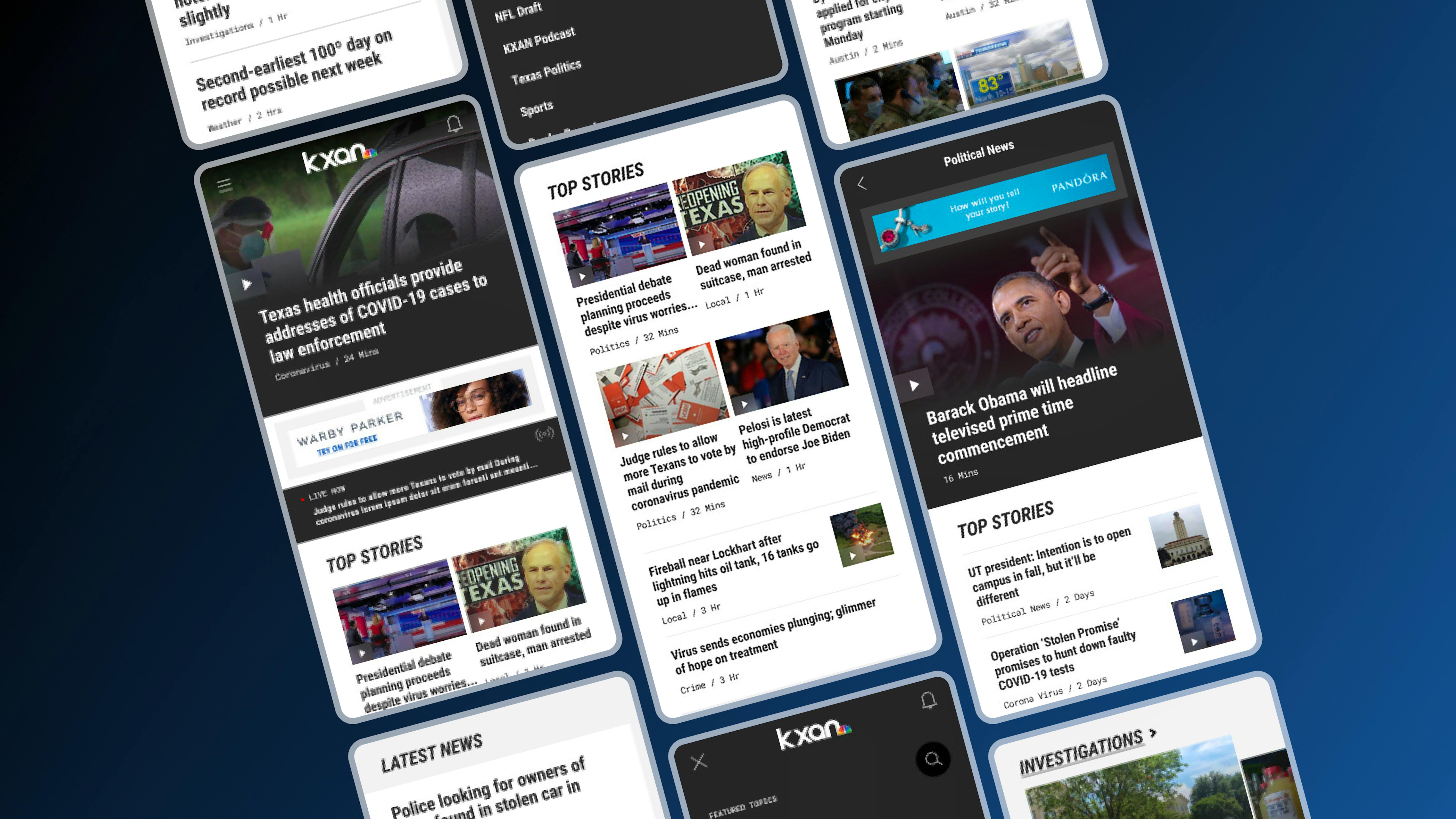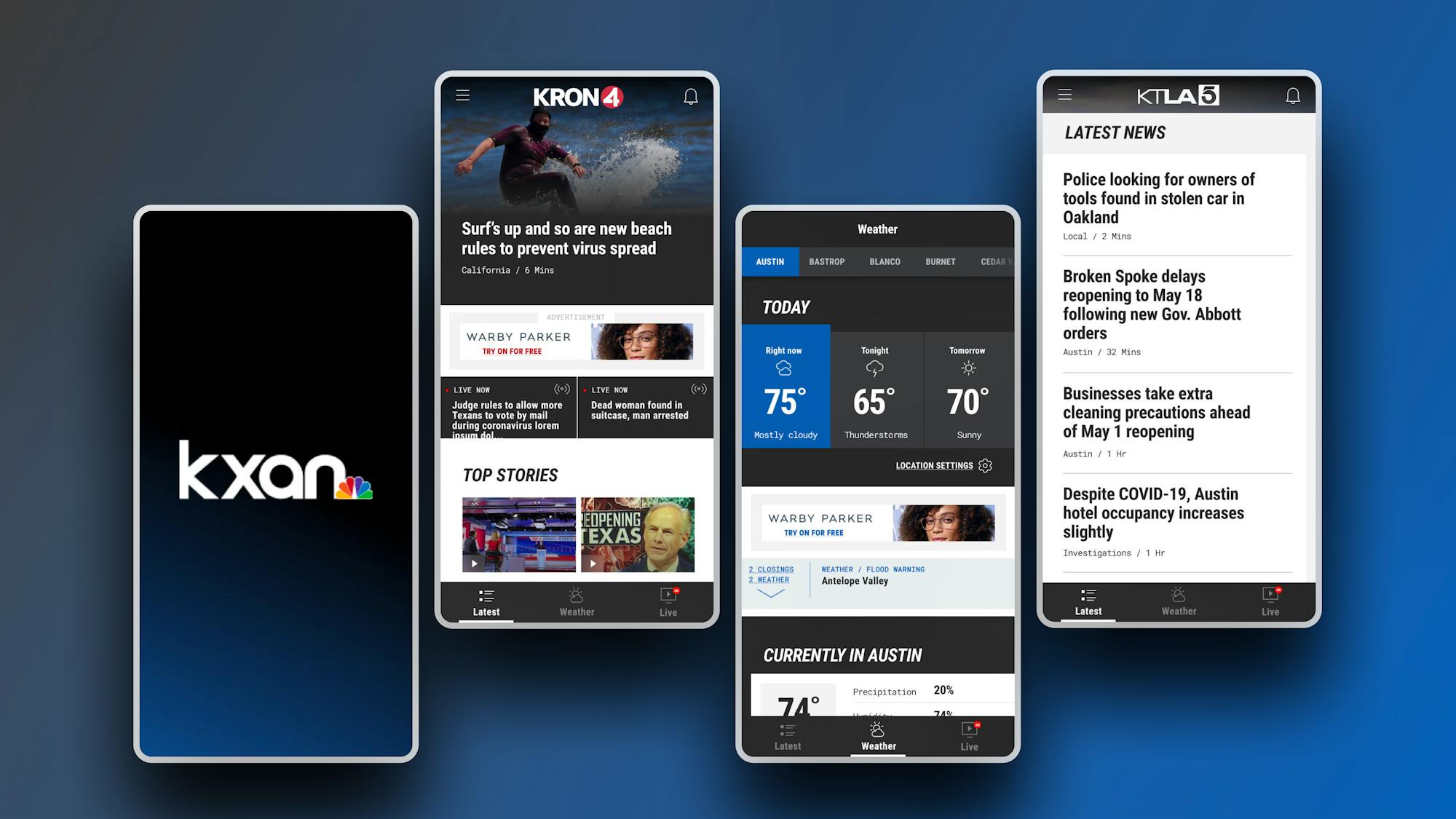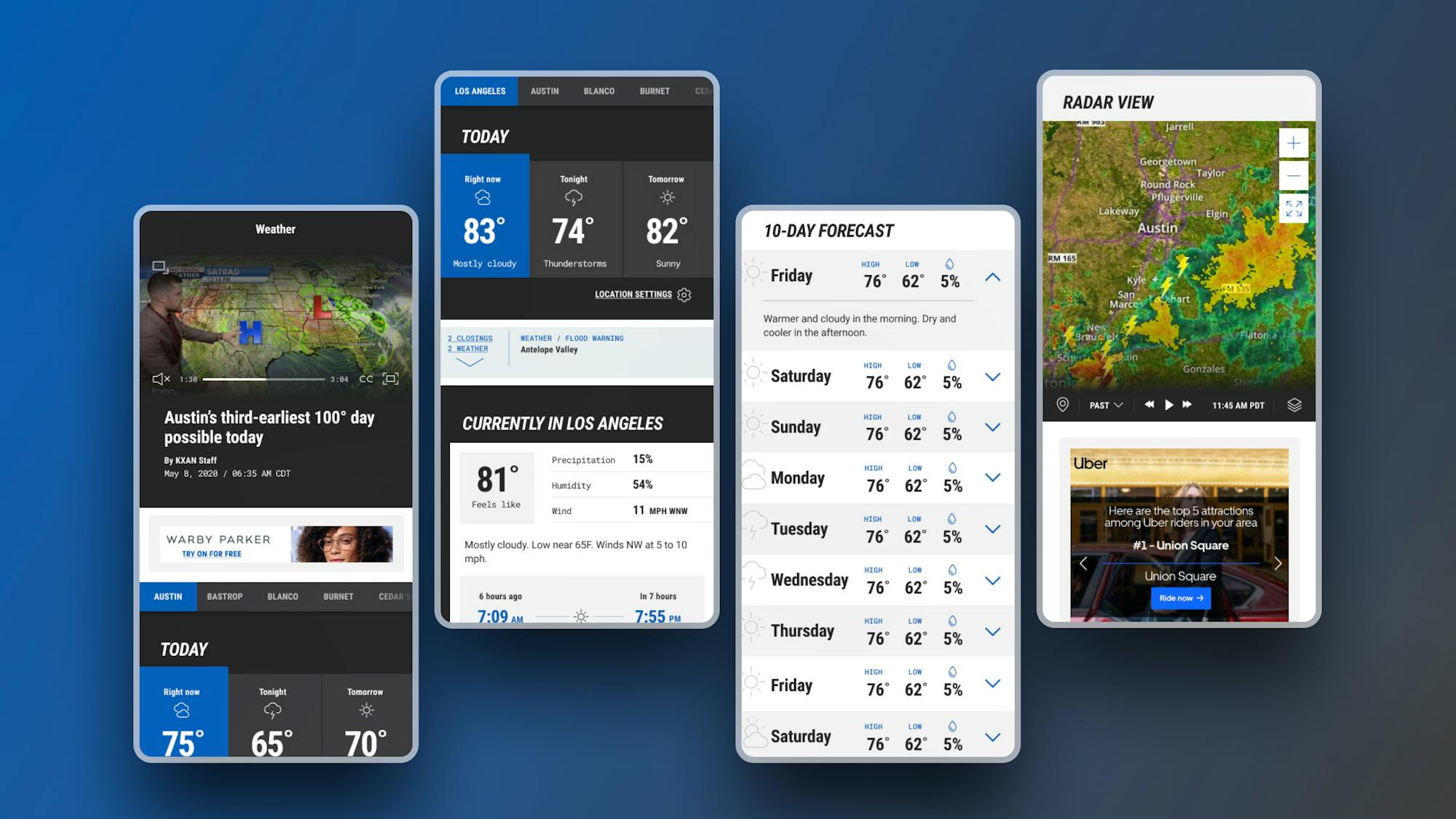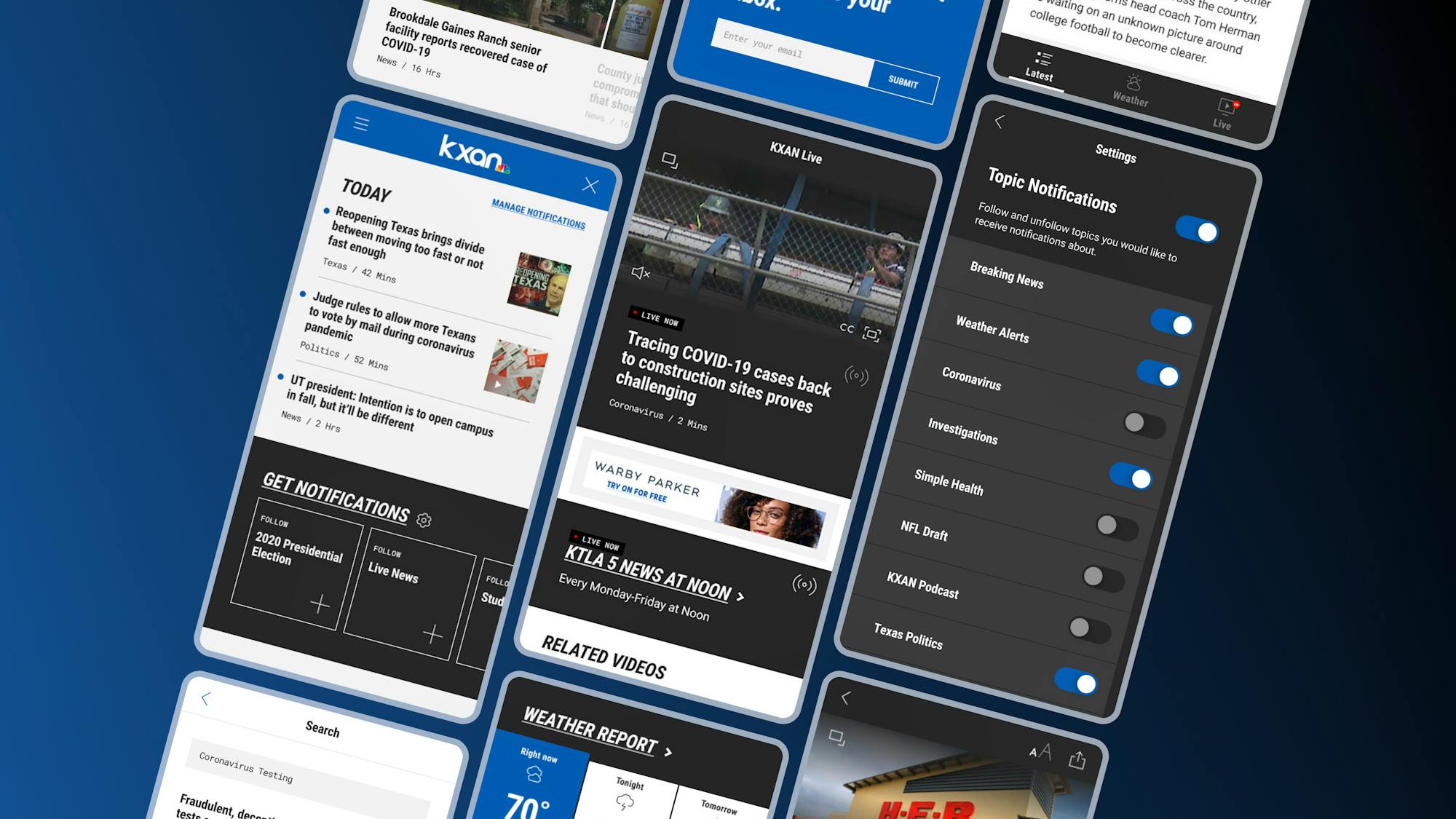
Helping 130+ Local News Stations Transition to Digital
1
The Background
Nexstar Media Group is the largest local broadcast television group in the United States and one of the world’s leading diversified media companies. They own and operate 197 television stations, delivering hyper-local news to 115 markets or approximately 63% of all U.S. television households. As news audiences transition from broadcast towards digital, Nexstar looked to partner with Code and Theory to level-up their mobile app experience.

2
The Challenge
While all of their 197 stations had mobile apps, they were divided across a variety of third-party platforms, making them inefficient to manage, and limited in functionality. We needed to create a single solution that could serve the unique needs of every station, while also differentiating the value proposition of the mobile apps from the website.

3
The Strategy
Through our research, we learned that Nexstar audiences are more interested in weather content than almost any other topic. This content also serves really well as a mechanism to create a daily habit — as users tend to check the weather every day. We also learned that the second most popular topic by far is Crime content. Nexstar audiences need an experience that puts the things they are most interested in front-and-center. Additionally, notifications are one of the best performing retention mechanisms for mobile apps–so we also put an extra focus into ensuring a great and robust notification experience.
4
The Solution
With the scalable platform and modular design we created, Nexstar was able to launch unique apps — across iOS and Android — for each of their 197 local news stations.
Local news often creates more of a sense of connection and community than national news — and feels more relevant to the specific community it serves. With an individual and customizable app for every Nexstar station, they are able to bring this sense of community, connection, and relevancy to audiences across the country.
The weather experience we designed takes advantage of features that native apps often do better than websites — by leveraging a user’s geolocation data to deliver the most relevant results. This creates a great value proposition to convert weather-fan users to download the app, as opposed to only checking it on the website. It is also featured as the second main navigation item for easy access at any time.
Alerts about weather, breaking news, live tv, and closings are displayed at the top of the home screen, and users are given easy ways to sign up for notifications on their favorite topics.
